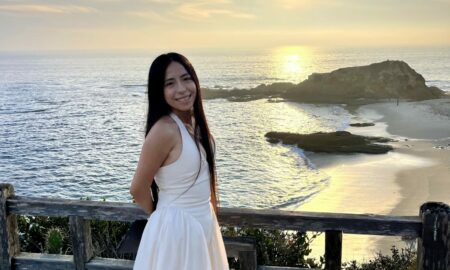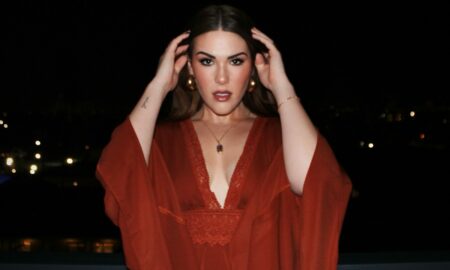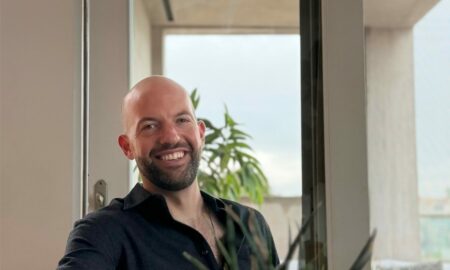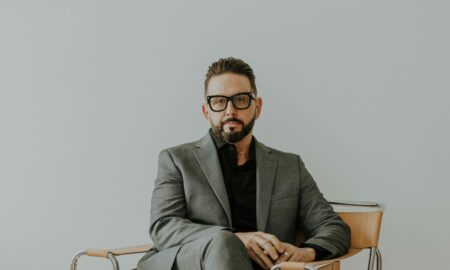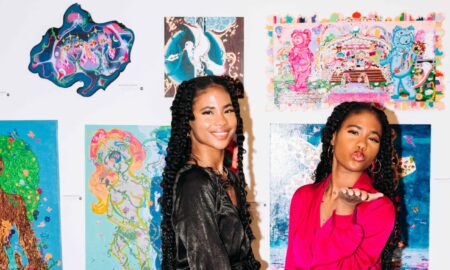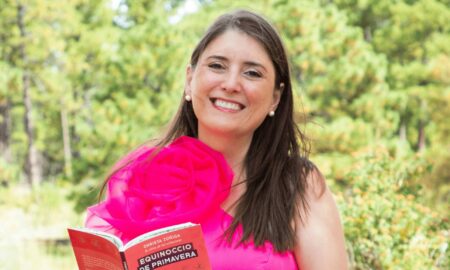

Today we’d like to introduce you to Lila Higgins.
Lila, can you briefly walk us through your story – how you started and how you got to where you are today.
I grew up on a farm in the U.K. in the small village of Powick. I used to roam the sheep fields, pretend to be a badger in a hollow tree and would follow butterflies to see where they lived. I remember this one time when I climbed inside a hollow tree and a slime mold (sort of like a mushroom) exploded on my head and left this amazing goop in my curly hair–everyone thought this was hilarious! This was how I learned to love nature. Then when I was 14, I moved to the U.S. to live with my mum, and it was MAJOR nature shock. I was used to everything being green in the spring & summer, then turning brown in the fall, and then going dormant in the winter. Southern California was so different!
I loved studying science and so went to college to pursue a degree in Entomology (at UCR). Through this course of study I began to see my new environment in a whole new way–I realized that the hillsides that were brown and dead-looking to me were actually home to 1000s and 1000s of insect species!
After undergrad, I moved to Pittsburgh and did ceramics in the mountains there–for a total change of pace. I got my first museum job there, at a Frank Lloyd Wright house–Kentuck Knob. I was a docent and led people on tours through the house.
Then I did a master’s in Environmental Education at Cal State San Bernardino–because I realized I was more passionate about communicating and teaching about science than focusing all my energy on scientific research.
In 2008, I moved from back east (where I’d been working for Mass Audubon) and got a job at the Natural History Museum. It was literally my dream job. I was going to get to share my love and passion for nature in the city with museum visitors and learn so much from all the educators and scientists who already worked there.
We’re always bombarded by how great it is to pursue your passion, etc – but we’ve spoken with enough people to know that it’s not always easy. Overall, would you say things have been easy for you?
I feel like I’ve been really lucky on my path–not to discount all the hard work I’ve put in. Some of the challenges have been–I had to take a mandatory three months furlough while working at the California Department of Food and Agriculture (I was a biological technician and worked on Glassywinged sharpshooter research and biological control–literally spent 1000s of hours counting and sucking up tiny wasps and sharpshooters)! I had worked too many days in a 12 month period and so had to take three months off–I had just started grad school and 100% couldn’t afford to not work. Within the week, I had found and applied for a job at the local museum (Riverside Metropolitan Museum) as their science program coordinator. I got it!!!
Making decent money has also been a struggle! When I took the job at NHM, I also had another job offer for the Director of Education at the Fullerton Arboretum–It paid 20$K more a year, but I took the job at the museum because I thought I’d have more room for growth AND I definitely didn’t want to commute to Fullerton from Koreatown! Non-profit salaries are pretty LOW!
So, as you know, we’re impressed with Natural History Museum of Los Angeles County – tell our readers more, for example what you’re most proud of what sets you apart from others.
My life’s work is to help people connect to nature–whether it is the beginning of their nature journey or deepening it wherever they are. I love de-centering humans and focusing on the plants, animals, fungus, lichens, slime molds and other organisms that live with and around us. I do this through my work at the museum and through an array of side gigs.
My work at the museum really dovetails nicely with the Museum’s mission “To inspire wonder, discovery, and responsibility for our natural and cultural worlds.” I’ve worked on projects that connect people to nature and share their experiences of connecting to nature through: the 3 1/2 acre Nature Gardens–a place for kids and adults to play and get up close and personal with the plants and animals that call L.A. home. The Nature Lab exhibit which helps to tell stories about the nature in L.A. from multiple perspectives. The Wild LA book (I am one of the two lead authors of the book) which helps Angelenos explore the amazing nature in and around Los Angeles. And of course, though my work as the Senior Manager for the Museum’s Community Science program, Through our community science program, we work to not only connect the general public to nature in Los Angeles but also help them to engage in real scientific research about it. From projects where people document reptiles and amphibians or snails and slugs with their smartphones to others that work with families to host bat detectors or insect traps int heir own backyards–all of our work helps us understand nature in the city better. The project that probably sets me the most apart is the City Nature Challenge. I co-founded (in 2016) this event with Alison Young from the California Academy of sciences as a competition between L.A. and S.F.–which city could find the most nature? That first year LA beat SF and we collectively made around 20,000 observations of nature in the city. Since then the project has grown and in 2020 (during the PANDEMIC) we had 244 cities take part around the entire globe and we collectively made 815K+ observations, of 32K+ species, with 41,165 people taking part!!!
As an individual, I also do a lot of other things to help connect people to nature in Los Angeles. I run river tours on the L.A. River with my river sister, Kat Superfisky. Was part of the artist collective Play the L.A. River that created a river card deck to help folks explore the river. Worked with the L.A. Urban Rangers to facilitate water tastings and talk about where our water comes from. Lead Play Memory Mapping workshops. And most recently, I’m training to become certified forest therapy guide through the Association of Nature and Forest Therapy. Anyone want to go on a forest therapy walk??
So, what’s next? Any big plans?
I am currently spending a lot of time thinking about how the work I do can be actively anti-racist. I have been a member of White People for Black Lives here in L.A. for a number of years now and been working to find ways to extend that work into my spheres of influence. In the aftermath of George Floyd’s murder at the hands of police and the ensuing uprisings, I feel that it is imperative that environmental orgs & museums take a deep look at how their work is perpetuating white supremacy culture and actively create plans to end those practices. Both science and museums are steeped in white supremacy culture, even in light of all the DEIA (diversity, equity, inclusion and accessibility) work many orgs have started/been doing. If we are not doing this work now, when will we ever?
I’m looking forward to doing this work with my team at the museum and within the field of community science at large. I will also continue my work with White People 4 Black lives locally and SURJ (showing up for racial justice) nationally.
Contact Info:
- Website: www.nhm.org + www.citynaturechallenge.org








Image Credit:
Maiz Connolly, Deniz Durmus, Lila Higgins, Mitch Walker
Suggest a story: VoyageLA is built on recommendations from the community; it’s how we uncover hidden gems, so if you or someone you know deserves recognition please let us know here.













